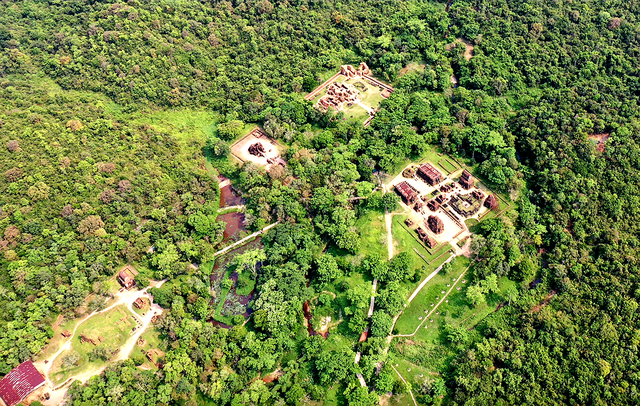
An aerial view of the My Son Sanctuary complex, a UNESCO World Heritage Site in Da Nang City, central Vietnam. Photo: B.D. / Tuoi Tre
Over four decades of tireless restoration efforts—backed by international agencies, experts from home and abroad, and the unwavering support of local communities—have brought My Son Sanctuary back to life.
The area was previously part of former Quang Nam Province before Quang Nam was merged into Da Nang City on July 1.
On a late July afternoon, luxury tour buses and smaller shuttles continued arriving at the iconic Cham tower gateway marking the entrance to the World Heritage Site.
Among the visitors, Christopher Dun from Australia stood frozen, camera in hand, mesmerized by the ancient ruins before him.
He described the atmosphere as unlike anything he had encountered before—an otherworldly mix of landscapes and architecture, where a narrow path opens between wide valleys and dense forest.
The setting, he said, felt almost sacred.
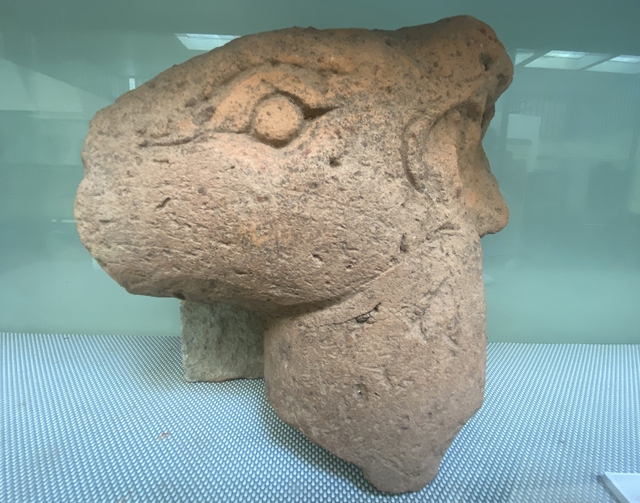
Archaeological artifacts on display at the My Son sanctuary in Da Nang City, central Vietnam. Photo: B.D. / Tuoi Tre
A quiet electric shuttle glided silently along a winding concrete road hugging the mountainside through the valley.
At a cultural stop, the haunting notes of the Saranai horn filled the air, drawing visitors to pause and listen as a local man in traditional Cham attire breathed soulful melodies into his ancient instrument.
The site stretches some three kilometers from the entrance to the heart of the tower clusters, and visitors often asked the shuttle to slow, wanting to absorb every sound and sight.
Yet My Son remains a puzzle for archeologists.
Each brick and tower holds mysteries buried by centuries, drawing history buffs and pilgrims alike.
A recent excavation nearby carefully uncovered foundations of an ancient structure—stones and bricks meticulously left in place beneath a tangle of tree roots.
Unlike more commercialized sites, My Son offers a raw, contemplative experience to heritage lovers, most of whom come from abroad.
Many Vietnamese visitors are surprised to see foreign tourists standing motionless, captivated by piles of moss-covered bricks—the silent witnesses of time.
Home to over 70 Hindu temples built by the Cham people over nine centuries, My Son ranks alongside Southeast Asia's great heritage sites like Angkor, Pagan, and Borobudur.
Polish architect and conservationist Kazimierz Kwiatkowski, who led major preservation work at My Son in the 1980s and 1990s, believed the Cham builders had embedded their spirituality into the very stone and earth of the site.
He viewed My Son as a grand, solemn creation shaped in harmony with nature — a priceless architectural and artistic legacy that scholars are still working to fully understand.
Though ravaged by time and war, My Son's surviving ruins remain a crucial part of global cultural heritage.
Recognizing its outstanding universal value, UNESCO inscribed My Son as a World Heritage Site on December 4, 1999, alongside the ancient town of Hoi An, ensuring its protection for generations to come.
Preserving heritage on a battlefield
Repeated visits reveal large, bowl-shaped craters hidden beneath dense foliage throughout the site.
These bomb pits remain stark reminders of the brutal wars that once devastated My Son.
Le Van Minh, a guide with the My Son World Heritage management board, pointed to one crater that is nearly as deep as a man is tall, now partly covered by the roots of old trees.
He explained that the site had been heavily bombed during wartime.
Even today, the remnants of those attacks remain visible across the site, near several surviving temple structures.
Minh recalls early restoration days in the 1980s when state officials and experts first entered the valley.
Land mines littered the surface, injuring locals and staff during clearance operations.
Artist Nguyen Thuong Hy, who worked alongside Kwiatkowski in 1981, remembers My Son as a ruin overtaken by vines and trees, with many towers vanishing beneath the earth—only mounds and scattered bricks hinting at its former glory.
No one imagined then that this thousand-year-old heritage site would one day be restored to its radiant splendor and attract visitors from around the world.
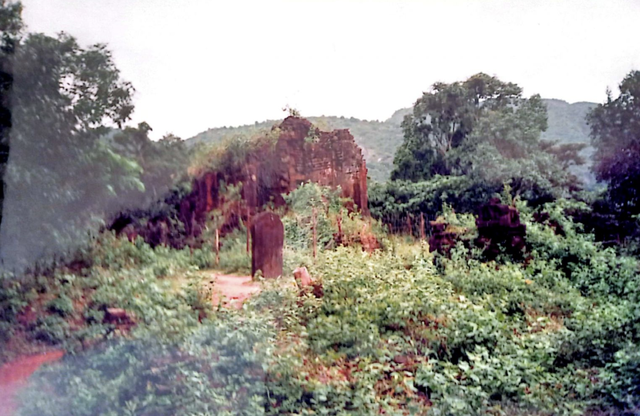
A 1999 image of the G tower group at the My Son sanctuary, captured from archival materials. Photo reproduced from archive
The painstaking work began with clearing vegetation, removing invasive roots clinging to towers, and sweeping away explosives.
Experts say one of the biggest challenges in rebuilding My Son is the lack of an original blueprint.
Restoration relies on French colonial records and deep research into ancient Cham culture and architecture.
Today's restored complex—with some 70 towers rebuilt or conserved—stands as a testament to generations who poured sweat, youth, and sometimes blood into preserving this cultural treasure.
The painstaking journey has lasted nearly half a century and continues until the site's 9th-13th century structures can be faithfully recreated.
Despite ongoing excavations and restoration alongside tourism, My Son remains a living monument to a vanished civilization.


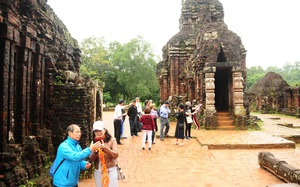
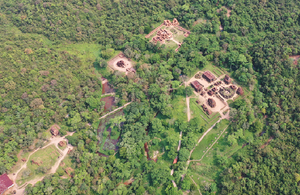
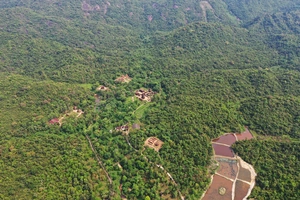
Max: 1500 characters
There are no comments yet. Be the first to comment.